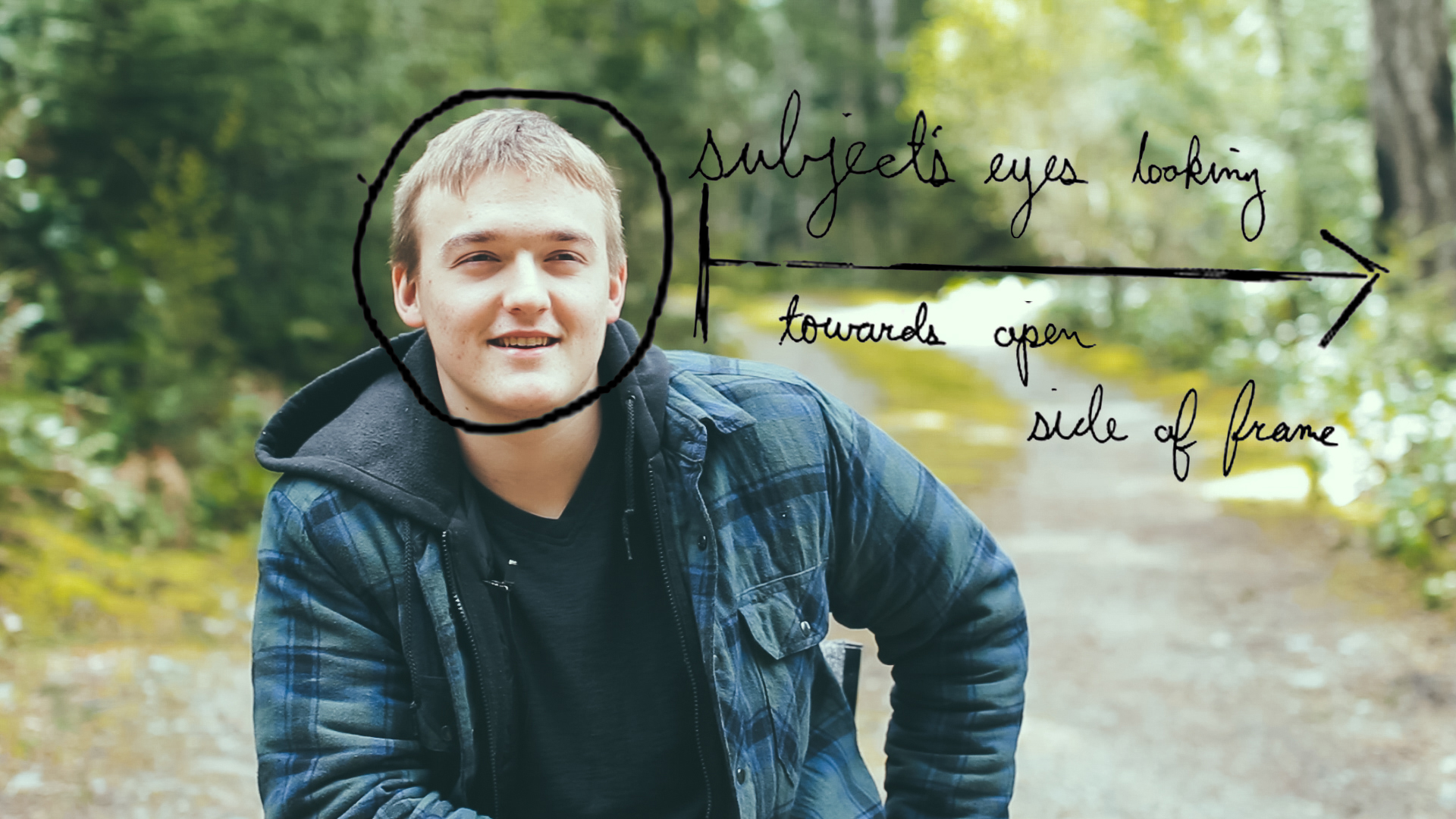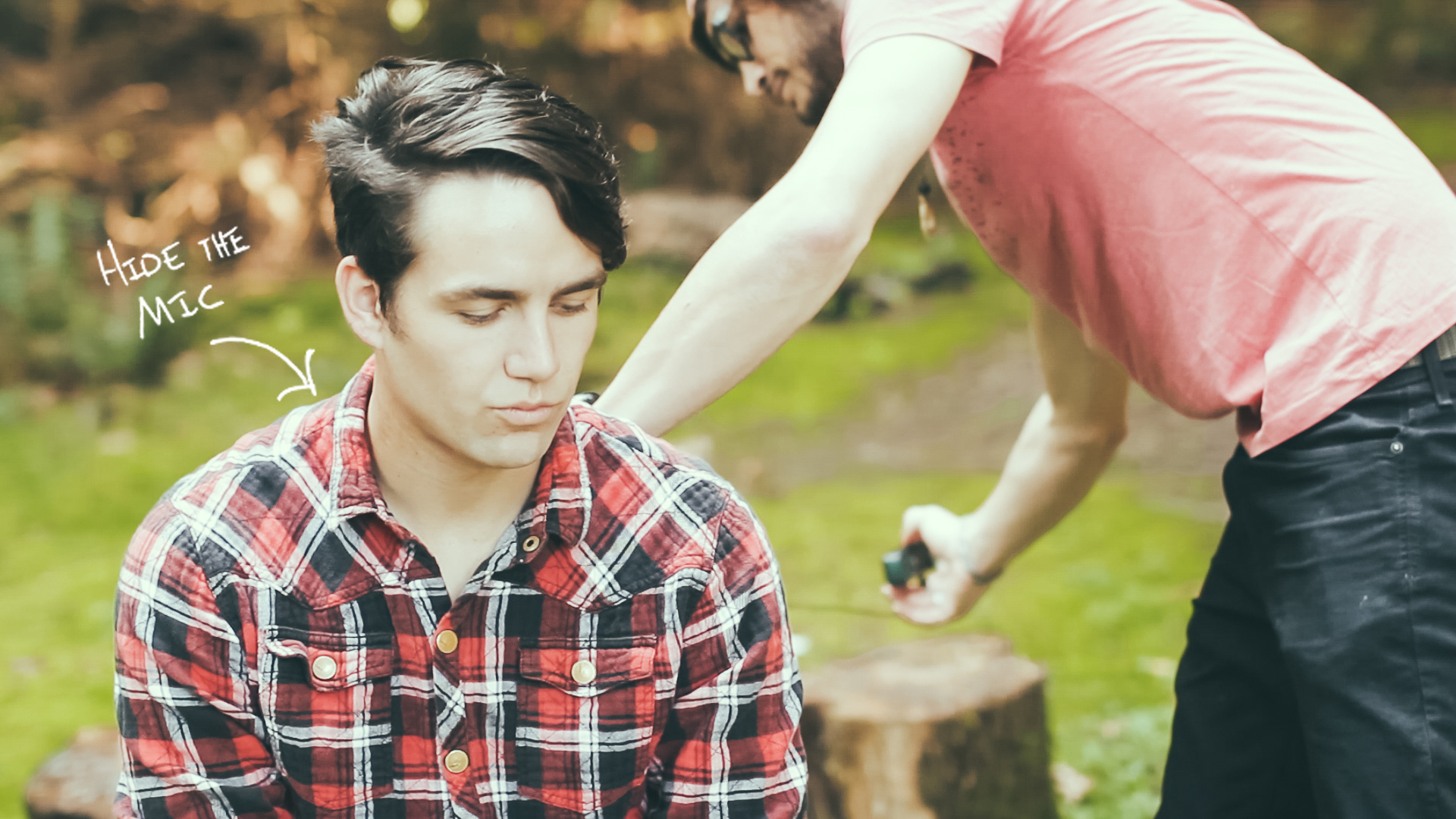https://vimeo.com/127073088 This week I got asked a question from Alyssa, "Levi, I am just starting out with filmmaking and I wanted to learn how to conduct interviews, could you share some of your tips?"
I just created a film that was heavily driven by interviews (as seen above). I thought it would be an excellent opportunity use this piece as a case study of sorts as I talk about my interview process. My goal in this post is to teach you how to go about creating better interviews for your next film! First I will share my approach to interviews, and then share some behind the scenes info on this Kaleo film.
How to Craft Real Life Stories with Great Interviews
This post is going to help you learn how to capture better real life stories. I am going to push into an important component of how I approach storytelling, getting great interviews with ordinary people.
Interviews as the Backbone of Story
The filmmaking style I am developing definitely relies heavily on using interviews to convey the story. In most cases I find that I am interviewing people who have sometimes never been on camera before in their entire life. But I have learned a few tricks to make the whole process a lot more natural and comfortable for everyone involved.
Once I have captured the interview I eventually end up cutting out the main best bits of their talking and using this audio drive a visual story. I don't include the audio of my questions being asked, I only use the visual and audio of the subject.
The Preparation
The nature of the interviews I normally conduct, do not allow for a whole lot of pre-production. If you are interviewing a public figure or an artist, you need to do your homework and study up on the subject. Yet most of the time you might be interviewing someone who has nothing about them on the internet. In this case there is not much that you will have prepared going into the interview. What I normally do for every interview anyhow, is sit down on my own before hand with a piece of paper and sketch down some thoughts or ideas I would like to cover. I don't use this as a formula I have to follow, rather just as an idea sheet for those moments in the interview where I feel stuck and don't know where to go. I find this small bit of prep helps a lot and makes me feel a lot less panicked about what I need to cover.
Learn About the Subject
Do you know much about subject you are going to be talking about with the person? If not you should definitely spend some time learning about the subject, are you going to talk about this persons massive Star Wars collection? Well then, you should probably know a thing or two ahead of time about Star Wars.
Chose a Location that is Distraction Free and Comfortable
Your goal as the interviewer is to get your subject into the most comfortable and natural state as possible. You want to get them talking as if they were in a conversation with an age-old friend. This is hard to do in a location with lots of distractions or unwanted interruptions. I ask them to sit on the edge of the chair so they their body position naturally seems more interested in what they are talking about. This way they don't slouch their shoulders and lean back in the chair as well.
The Technical Gear
This could be an entire post in and of itself, but I will give a few tips that I use. When setting up your angle, try to have the camera at eye level with the subject or a little bit above. My goal with angles and lens choice, is to make it feel as if the viewer is sitting there with the subject. Use good composition and have the subject look slightly to either side of the camera. Having them look to the long side of the frame (as shown bellow) helps create a far more natural feel. You can get stylistic here if you are trying to convey a certain feeling, but this is usually my starting place with single camera interviews.
Don't Slack on the Audio
The biggest part of what will drive this interview is good clear audio. I use a wired lav connected to a Zoom H1 to record my audio. It is strongly recommended to have two sources of audio such as a shotgun mic and Lav, but I currently have not invested in this. When setting audio levels I usually tend to get a conversation going with the subject trying to make them feel comfortable. I don't even let them know I am setting levels, I just try get them to talk about themselves or where they are from. While they are talking try set your levels and leave a little room so if they get excited it won't peak the audio
The Most Important Part: The Interview Itself
In order to conduct a great interview, you need to be a well-practiced conversationalist. This is by far the most important part of getting consistent results from a wide variety of people. Your goal is to get them comfortable and forget entirely that they are on camera. Most people are super nervous about the whole process and the quicker you can get them comfortable, the quicker you are going to start getting the audio bits you actually want to use. When first sitting down I tend to explain how the interview process will go, "It's going to be just like a conversation, don't worry about the camera, you can talk directly to me." I sometimes explain as well that I would like to have them include the question in their answer. For example, Q: "How do you like being interviewed?" A: "I really enjoy being interviewed."
Instead of
Q: "How do you like being interviewed?" A: "I really enjoy it."
You must be a fantastic listener
Once the interview starts and the technical components are rolling, your full-time job is being a fantastic listener. You need to make them feel as though you care immensely about what they are saying. You need to ask great questions that build off what they just said. You should ask questions that make them think, "Man i've never thought about that before."
The moment you look down at your paper for your next question, you have pretty much lost them.
This is so challenging, but you need to keep eye contact with them and avoid being distracted yourself. You can look at your questions from time-to-time, but if the interviewer starts to feel like you are following a script, you will get results as if you were following a script; forced and unnatural.
Editing Together your Interviews in Post
This step is incredibly important as well. Important enough that I decided to make an entire blog post about it next week. If you are not apart of the Leftcoast Collective already I strongly recommend getting on board so you can find out when my latest posts are released, you also get a free ebook which is pretty cool.
Some Behind the Scenes Info For the Kaléo Film
The Purpose of the film: This is a film that I created to document and share the story of an eight month leadership program on Vancouver island. This piece was driven by interviews that I conducted with ordinary people who had never been in front of a camera before. The format is a little long as it was not necessarily made to be viewed online.
The Filming Process: I gathered my footage throughout the year whenever I had the chance. My primary job was as a leader on the trips, so filming definitely was not a priority. For this reason my kit was usually really light. I rocked a top loading Tamrac bag so I could pull out a camera at any time and film. Using the Rode Video Mic Pro for Audio I shot primarily handheld or with my homemade stabilizer using mostly the Tokina 11-16 or my Rokinon 35mm f1.4
The interview shots were all done with my sigma 50mm 1.4
The Editing: I edited this piece in the few days coming up before their graduation. From the start of the editing to the time it was screened, I had just under a total of 36 hours. I cut all the interview selects, and then started to piece together a storyline. Then I went through and cut all my favourite BRoll and started adding that in over top.
The Grading: I only invested about an hour into grading as that was the only time I had. I did a basic color grade through lightroom using VSCO. I am not to happy with a few of the shots, but most of it turned out just fine.
All in all the project was heaps of fun. I always wish I had more time to edit, but It was literally right down to the deadline on this one. I literal just finished encoding the project 5 minutes before the grad ceremony started.
Woah, this ended up being a bit of a wordy post. I hope you got some value from it. As always if you have any questions connect with my on social media, or join the Leftcoast Collective and send me an email directly!
Download Free Guide
I have made this guide available to all current and future subscribers of the Leftcoast Collective. If you would like to receive a copy of it directly join the Leftcoast Collective bellow. I will continue to send free great content every Thursday and you can unsubscribe at any time. [yks-mailchimp-list id="e34efe9754" submit_text="SEND ME THE FREE EBOOK!"]
Written by: Levi Allen





